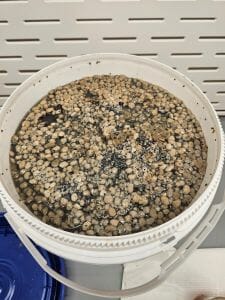May 22, 2023

When most people think about biodiversity the first things that come to mind are animals and plants. However, there is an incredibly diverse world that contains some of the world’s smallest living things. Biofilms are made by microorganisms and can be found everywhere from the depths of the ocean to the inside of our own bodies and have been around for 3.25 billion years.
These films first begin to form when groups of bacteria or other microorganisms find a surface that they can attach to. Once these pioneers are attached, they begin producing different molecules that allow them to stick together and the film can grow to be inches thick. These biofilms help microorganisms in many ways, from allowing them to survive in very harsh conditions to providing them with antibacterial properties. While these advantages can make a biofilm infection difficult to treat, biofilms also form an important part of our bodies microbiome and are a major part of human health.

Biofilms can be beneficial, benign, or problematic in water treatment and distribution systems. The photo above shows small black particles which consist of granular activated carbon (GAC). Vessels containing GAC remove a variety of chemical contaminants from water. The larger beige pea-sized spheres consist of biofilms that have grown around the GAC particles. These types of biofilms can cause problems because they block water from flowing in the vessel and decrease the effectiveness of GAC. In severe cases such as this, the GAC would likely need to be removed and replaced. In less severe cases, the GAC can be disinfected, backwashed by reversing the flow of water and discarding the waste, and used again for treatment. GAC can also be regenerated by steam treatment.
Biofilms can be found anywhere in any water system because water is life!
Acknowledgements
Thank you to TWT Sustaining Partner Carollo Engineers for the sample bucket which provided inspiration for this post.
References
https://www.livescience.com/57295-biofilms.html
https://www.mdseagrant.org/interactive_lessons/biofilm/intro.html
The Water Tower consists of two nonprofit organizations: The Water Tower at Gwinnett, a 501(c)4 – responsible for the development and operations of the campus, and The Water Tower Institute, a 501c3 – responsible for solutions, instruction, and engagement programming. Together, these entities are cultivating an ecosystem of water innovation fueled by imagination, informed by research, and powered by pioneers. The Water Tower brings together public and private sectors of the water industry, side by side with academia and nonprofits, to tackle the industry’s greatest challenges.